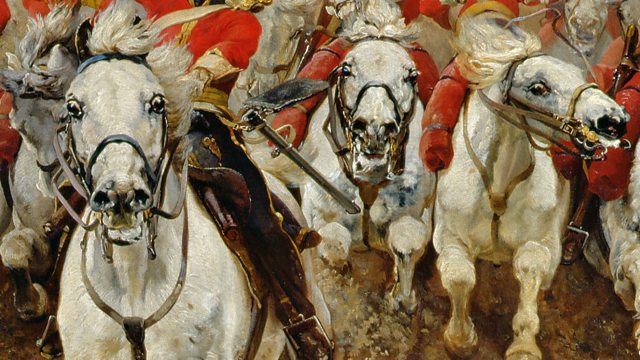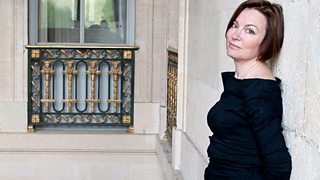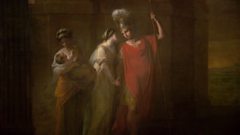
Elizabeth Thompson, Lady Butler and war art
Historian Amanda Vickery explains how Lady Elizabeth Butler (1846-1933) became a famous and successful war artist at a time when war art was thought to be just for male artists.
Only a few women in the 18th and 19th centuries were accepted as artists. The Female School of Design was set up in the middle of the 19th century to train female artists. Amanda Vickery tells us this was a breakthrough after centuries of women not being taken seriously as artists. After 6 years the Female School of Design moved to the Strand which was well known for prostitution and crime. Lady Elizabeth Butler (1846-1933) became the most successful war artist of her time when war art was thought to be only done by men. Portraits of Lady Butler and her sketch book are shown and we see her interest in war started aged 14.
In 1874 Lady Butler submitted a painting called Calling the Roll after an Engagement in the Crimea, 1874 to the Royal Academy. It was very popular with audiences when they saw it in an exhibition. It is unusual because it is not about heroism and battle but the strain on injured soldiers as they re-group. Lady Butler organised scenes to be re-enacted because she could not visit the battlefield herself. Scotland Forever 1881 is shown and we are told Lady Butler saw a cavalry charge twice before painting it. Historian Amanda Vickery praises Lady Butler for succeeding in an area of art which was thought to be for men only.
Duration:
This clip is from
More clips from The Britain that Women Made
-
![]()
Anne Seymour Damer and sculpture
Duration: 05:32
-
![]()
Angelica Kauffmann and the Royal Academy
Duration: 05:32
-
![]()
Gertrude Jekyll and garden design
Duration: 05:19
-
![]()
Karin Larsson and interior design
Duration: 06:24





